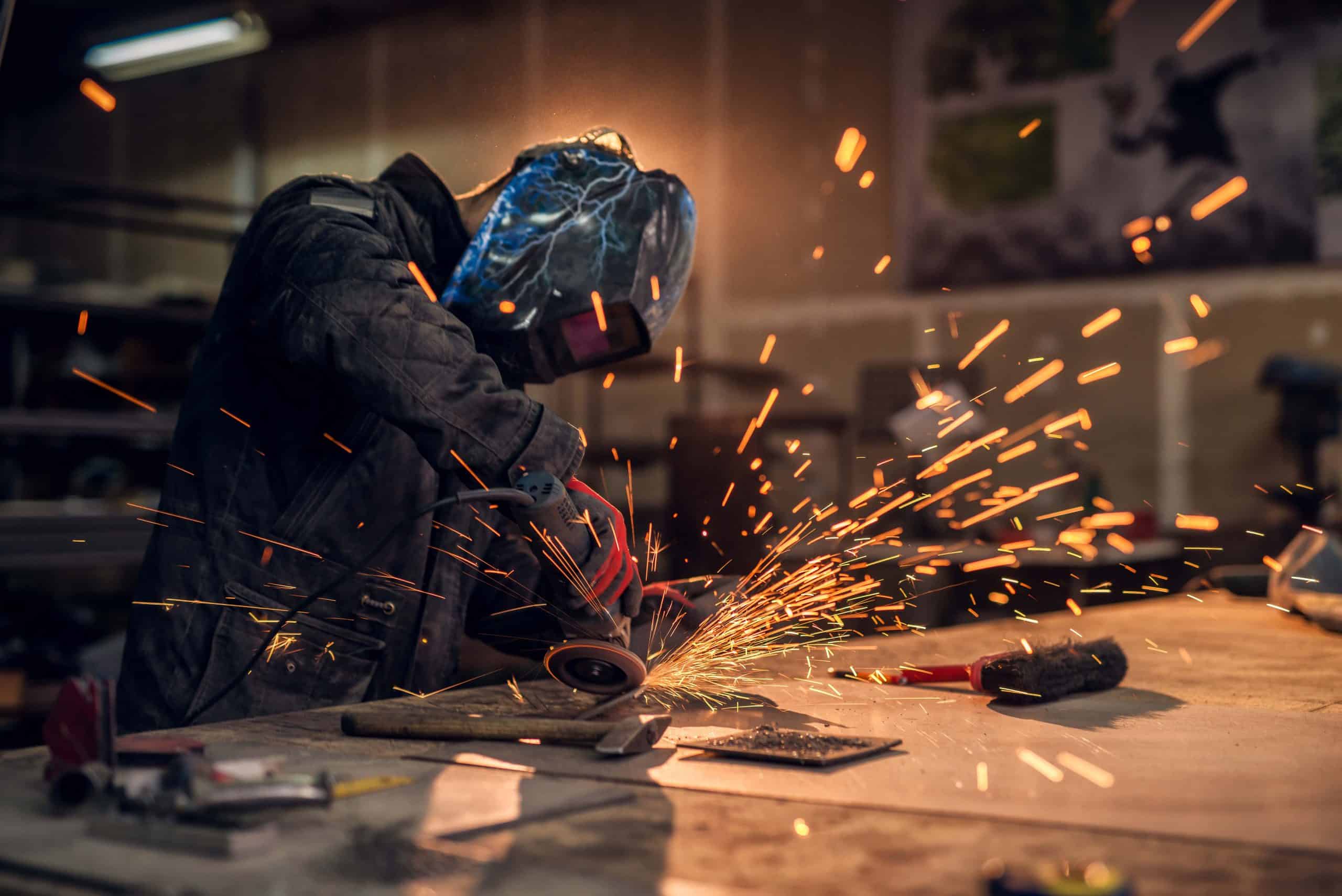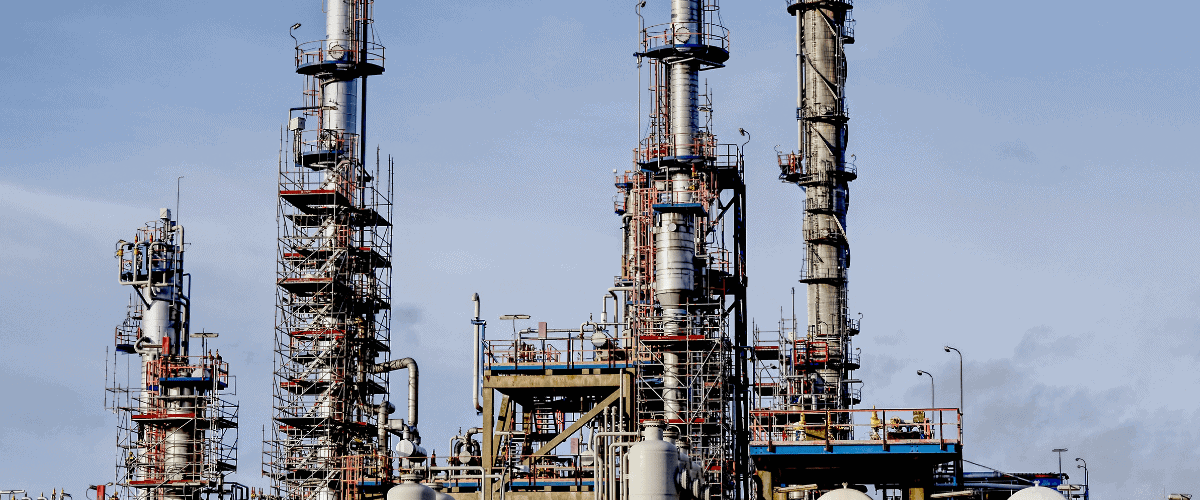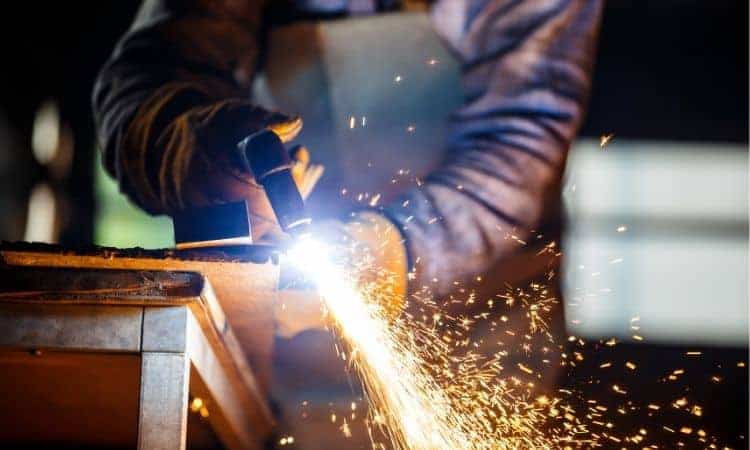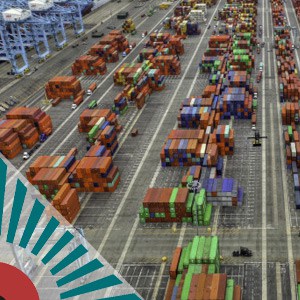SEIFSA welcomes uptick in capacity utilisation in the manufacturing sector
JOHANNESBURG, 05August 2021 – The improvement in manufacturing sector capacity utilisation even as South African remains under lockdown is encouraging, the Steel and Engineering Industries Federation of Southern Africa (SEIFSA) said today.
Data released by Statistics South Africa (Stats SA) today shows total capacity utilisation was 78.6% in the second quarter of 2021 compared with 59.8% in second quarter of 2020, thus representing an increase of 18.8%. Within the Metals and Engineering (M&E) sector, capacity utilisation significantly improved to 77.1% in the second quarter of 2021, from 52,9% in second quarter of 2020.
All the manufacturing divisions showed increases in utilisation of production capacity in May 2021 compared with May 2020. Within the M&E sector, motor vehicles, parts and accessories and other transport equipment recorded utilisation of production capacity above 80% in the second quarter of 2021.
SEIFSA Chief Economist Chifipa Mhango said this is welcomed news as it demonstrates that if lockdown regulations are further eased as the vaccine roll-out ramps up, production levels can increase under improved demand conditions.
In recent months, the manufacturing sector has also showed signs of improvement in terms of production patterns with year-to-date production improvement of 17.1 % to May 2021.
“Though there are improvements in total capacity utilisation, we are still operating at a level lower than 80% benchmark. Increased levels of industrial domestic demand are required for manufacturers to fully reboot capacity utilisation levels,” Mr Mhango said.
He said for production and capacity utilisation patterns to significantly improve, the Government needs to support the ailing manufacturing economy through effective implementation of the policy solutions as identified in the Steel and Metal Beneficiation Master Plan. “This is key if the M&E sector is to reverse the current decline in levels of employment and investment, while strengthening our trade position with the rest of the world,” he concluded.
Ends
Unemployment numbers reflect a depressed overall economic environment under COVID-19 restrictions, says SEIFSA
JOHANNESBURG, 1 JUNE 2021 - The Quarterly Labour Force Survey (QLFS) data released today by Statistics South Africa (Stats SA) indicating unemployment level of 32.6%, reflects the deep depressed impact of COVID-19 lockdown on South African employment and the overall economic environment across major economic sectors, the Steel and Engineering Industries Federation of Southern African (SEIFSA) said today.
According to StatsSA, South Africa's unemployment rate rose to 32.6% in the first quarter of 2021 from 32.5% in the previous quarter. It is the highest jobless rate in the 13 years and comes amid the ongoing pandemic lockdown, which has contributed to the depressed economic environment, resulting in low investment activity. The level of unemployment in South Africa is far above other economies such as Brazil (14.7%), China (5.3%), India (6.5%) and Russia (5.2%); which are in an economic development partnership.
Construction recorded the biggest employment decline with 87 000 jobs lost, followed by trade (84 000) and private households (70 000).
SEIFSA Chief Economist Chifipa Mhango said number of jobs in key demand-driving sectors of the Metals and Engineering sector such as construction is worrying. He said the Government and the private sector need to work together to stimulate the economy and create jobs. “Investment-driven economic recovery is key and the Government needs to promote investor confidence by speedily implementing its economic revival plans, including the R791.2 billion of public sector infrastructure development over the next three fiscal years,” Mr Mhango said.
He said the contribution of the M&E sector remains key to job creation, yet it shed 35 000 last year alone. Persistent challenges faced by businesses in the M&E sector such as high electricity costs, unreliable energy supply as well as disruptions in raw material supply, rising logistics costs and imports have continued to weigh negatively on the industry, thus affecting job creation in manufacturing as a whole. “It is, therefore, important that the Government and the sector continue to engage with each other on how to address these challenges,” Mr Mhango said, adding that it is such partnerships that will also ensure that other interventions such as the Steel Master Plan are quickly finalised and implemented.
Overall producer prices continue to rise indicating cost pressures at industrial production level, says SEIFSA
JOHANNESBURG, 27 MAY 2021 – The rise in producer price inflation (PPI) is indicative of the cost pressures manufacturers are currently facing as a result of rising input costs, the Steel and Engineering Industries Federation of Southern Africa (SEIFSA) said today.
According to Statistics South Africa (StatsSA) data released today, PPI rose from a low level of 3.5% in January, reaching 6.7% in April for final manufactured goods. SEIFSA Chief Economist Chifipa Mhango said contributing factors to this increase include rising transport and energy costs as well as mining products which, from an industrial perspective, might not be financially sustainable in the long term.
“The PPI data shows that manufacturers are passing these costs on to consumers, which is also why we see a rise in consumer price inflation, which rose to 4.4% in April,” he said.
Prices for intermediate manufactured goods also increased from a low base of 8.6% in January, reaching 11.4% in April. Mr Mhango said although this is positive news for producers of intermediate goods in the Metals and Engineering (M&E) sector in terms of potential revenue generation, in a depressed market this might negatively impact key consumer market affordability, resulting in lower sales volumes.
Mr Mhango said SEIFSA was, however, encouraged by the declining PPI for the mining sector. According to StatsSA, PPI in that sector fell from a high level of 22.9% in January 2021, reaching 10.8% in April. In 2020 alone, mining PPI averaged 32.5%, which was the highest since 2017, putting pressure on the financial position of M&E producing companies.
Mr Mhango noted that the uptick in PPI would continue. “As the global economy slowly starts to pick up amid more relaxed COVID-19 lockdown restrictions, with confidence building due to the roll-out of vaccines across the world, global PPI will pick up, along with oil prices and mining producer prices,” he concluded.
Rise in construction and building material sales bodes well for M&E sector, says SEIFSA
JOHANNESBURG, 20 MAY 2021 – The uptick in sales of construction and building materials, amid increased construction activity, is encouraging and bodes well for the Metals and Engineering (M&E) sector, the Steel and Engineering Industries Federation of Southern Africa (SEIFSA) said today.
Wholesale trade sales data released by Statistics South Africa (StatsSA) today showed an increase in sales of 10.6% in March 2021, compared with March 2020, while month-on-month wholesale trade sales decreased by 1.6% in March 2021, when compared with February 2021. In the construction and building materials category, sales increased from R10.8-billion in February 2021 to R12.3-billion in March 2021, with year-on-year growth of 38.6% in March 2021.
The increase in the sale of construction and building material was driven mainly by the increase in demand of building supplies such in basic steel products, cement and bricks, as construction activity ramps up amid relaxed COVID-19 regulations. The increase in M&E production sales, which improved significantly from R70-billion in February 20201 to R79-billion in March 2021 also supports the trend.
Commenting on the data, SEIFSA Chief Economist Chifipa Mhango said the increase in construction and building material is positive news for the M&E sector as it indicates increased activity, which will continue to drive demand for the sector’s products. He noted that the Government’s increased focus on localisation will help sustain this improvement.
“As we try to rebuild our economy by being more inward-looking to drive the local manufacturing capacity of, among other things, construction and building material, the Government needs to ensure that State entities comply with local content procurement requirements to drive demand, protect and create jobs,” Mr Mhango said.
Metals And Engineering Indaba to explore how Government is faring in restoring business confidence In South Africa
JOHANNESBURG, 6 May 2021 – The sixth Southern African Metals and Engineering Indaba will unpack the progress of President Cyril Ramaphosa’s “New Dawn”, exploring whether the sixth administration is succeeding in improving business confidence in South Africa.
The Indaba, organised by the Steel and Engineering Industries Federation of Southern Africa (SEIFSA) in partnership with the Industrial Development Corporation, takes place on 24 and 25 May at the IDC Auditorium in Sandton, Johannesburg. It brings together the Government, business, labour and civil society on one platform, to engage on, and find solutions to the challenges facing the Metals and Engineering (M&E) sector.
The session, to be unpacked under the title “‘The New Dawn’: The Sixth Administration, Business Confidence and South Africa’s Sovereign Credit Rating”, will feature a panel of respected political and business commentators, including Wits University lecturer Khaya Sithole, University of Johannesburg lecturer Professor Mcebisi Ndletyana and Executive Director of the Centre for Development an Enterprise Ann Bernstein.
SEIFSA said the sixth administration was greeted with much optimism and euphoria when it took over amid hopes that a Ramaphosa-led Government would restore confidence in the Government’s ability to grow the economy while forging an efficient, capable and ethical state that is free of corruption.
“However, given the devastation that the COVID-19 pandemic has wreaked on South Africa’s economy, as well as political internal battles in several political parties, it is clear that the Government has a long journey ahead of it to achieve its aims and restore much-needed investor confidence,” SEIFSA said.
“The Indaba, will therefore, take a critical look at the Government’s progress in turning around the economy and provide recommendations on what the Government can do better to ensure that the country can, among other things, grow the economy and arrest its sovereign credit rating decline,” the Federation said.
Other topics that will be delved into at the Indaba include the South African manufacturing sector’s readiness to embrace the fourth industrial revolution, the formation of a scrap metal exchange to benefit local manufacturers and how the M&E industry can strike a balance between growth and environmental sustainability.
Metals and Engineering Industry to explore opportunities of African Continental Free Trade Area Agreement
JOHANNESBURG, 4 May 2021 – The Southern African Metals and Engineering Indaba will focus on the African Continental Free Trade Area (AfCFTA) agreement, exploring the various opportunities presented by the AfCFTA.
The Indaba, organised by the Steel and Engineering Industries Federation of Southern Africa (SEIFSA) in partnership with the Industrial Development Corporation, takes place on 24 and 25 May at the IDC Auditorium in Sandton, Johannesburg. It brings together players in the Metals and Engineering (M&E) sector to engage on, and find solutions to the challenges facing the sector.
SEIFSA said with demand for the local M&E sector struggling, it is critical for the industry to be more export-oriented and expand its industrial market footprint. Trade with Africa as part of what promises to become the largest free trade area agreement in the world is one avenue to increase exports.
The Federation said it is critical to engage on the AfCFTA because of its potential to help revive the struggling M&E sector, given the sector’s trading position in Africa. From 2017 to 2020, the net trading position for South Africa in the sector was R412.3bn. “It is hoped that at the Indaba, stakeholders will find sustainable ways to strengthening this position,” the Federation said.
Confirmed speakers for this session include Secretary-General of the AfCFTA Wamkele Mene, Africa House Director Duncan Bonnett and John Rocha, Chief Director of Export Promotion, Development and Outward Investment Branch at the Department of Trade, Industry and Competition.
Metals and Engineering Indaba to bring industry players together to find ways to revive manufacturing
The sixth edition of the Southern African Metals and Engineering Indaba will take place from 24 to 25 May 2021 at the IDC Auditorium in Sandton, Johannesburg.
The Indaba, organised by the Steel and Engineering Industries Federation of Southern Africa (SEIFSA), will bring together businesses, labour, civil society and the Government on a single platform to find solutions to challenges plaguing the manufacturing sector in South Africa.
Under the theme “Surviving Tough Times and Growing the Economy”, the Indaba takes place at a time when South Africa’s manufacturing industry, and the Metals and Engineering subsector in particular, is struggling to survive following years of rising energy costs, unreliable power supply, transport challenges, increased competition due to cheap imports and reduced demand for its products. The sector now contributes only 12% to GDP, significantly down from the estimated 25% it used to contribute in 1990s. With South Africa’s economy struggling amid the COVID-19 pandemic, it is now more urgent than ever for all stakeholders to find solutions to rescue the sector so that it, in turn, can help drive economic recovery.
SEIFSA CEO Kaizer Nyatsumba said as with previous Indabas before it, this edition will shine the spotlight on matters affecting manufacturing in the country. “It has long been recognised that our economic growth depends on the existence of a thriving manufacturing sector. However, over the years, we have seen the sector shed rather than create much-needed jobs. It is now up to us, as stakeholders from both the public and private sector, to collectively find ways to arrest its decline,” he said.
Topics that will be discussed at the Indaba include South Africa’s readiness to embrace the fourth industrial revolution in manufacturing; the formation of a scrap metal exchange to benefit local manufacturers; the African Continental Free Trade Area and the opportunities it brings for South African businesses; an update on the Steel Master Plan and striking a balance between growth and environmental sustainability.Confirmed speakers include Minister of Public Enterprises Pravin Gordhan, Transnet CEO Portia Derby, Eskom CEO Andre de Ruyter, energy expert Ted Blom, leader of the Movement for One South Africa Mmusi Maimane, and Secretary-General of the African Continental Free Trade Area Wamkele Mene.
Declining trend in manufacturing sector production worrying, says SEIFSA
JOHANNESBURG, 8 APRIL 2021 – The unabated decline in manufacturing production is worrying and may worsen further amid steep electricity tariff and transport cost increases, the Steel and Engineering Industries Federation of Southern Africa (SEIFSA) said today.
According to data released by Statistics South Africa today, total manufacturing production declined by 2.1% year on year in February 2021, while it fell by 1.2% from January 2021. Total manufacturing sales, however, increased by 3.5% year on year in February 2021 and by 3.2% from January 2021. Year-to-date production declined by 3.1%, while sales improved by 2.1%.
Within the Metals and Engineering (M&E) sector, which accounts for a 29% share in total manufacturing production, total production across the 13 sub-categories increased by an average of 0.6% in February 2021 year on year, with total sales increasing by 5.3% to reach R70.8 billion.
Commenting on the data, SEIFSA Chief Economist Chifipa Mhango said the manufacturing production trends are worrying as they take place at a time when output needs to improve in order to spur economic recovery. He expressed concern that cost variables could push that output in the opposite direction.
“The manufacturing sector and M&E sub-sector, in particular, are sensitive to cost increases; this month’s 15.6% rise in electricity tariffs as well as increases in transport costs will only serve to deepen the decline in activity in the industry as companies, unable to absorb these costs, close shop,” he added.
Mr Mhango said the manufacturing sector is already in a woeful state, with declining levels of employment and investment and a weak global trade position. This, he said, had been worsened by the COVID-19 pandemic and the resultant lockdowns to curb its spread, with the sector now only contributing 12% to GDP from levels of 25% in the 1990s. He said this is contrary to other emerging economies, whose manufacturing sectors contribute 50% to their economies.
Mr Mhango urged the Government to intensify its efforts to revive the ailing economy.
“While SEIFSA is encouraged by the allocation of R54 billion over the next three years for economic and industrial development, among other interventions, the Government needs to speed up other interventions such as the implementation of the Steel Master Plan for the benefit of primary and downstream players,” he said.
The M&E sector, he said, is also pinning its hopes on the Government’s R791.2 billion public infrastructure spending over the next three years, since it is heavily reliant on key public infrastructure projects to boost its production and sales, especially in categories such as steel and downstream products such as roofing material. Mr Mhango said the implementation of these projects was important, especially if local content requirements are also enforced.
He said this, along with a shift towards expanding South Africa’s M&E production sales footprint onto the rest of Africa by taking advantage of the African Continental Free Trade Area, will help the sector back on its feet.
Ends
Issued by:
Mpho Lukoto
Communications Manager
Tel: (011) 298 9411 / 082 602 1725
Email: mpho@seifsa.co.za
Web: www.seifsa.co.za
Deferment of AfCFTA Launch still presents an opportunity for local business to grow exports share
The AfCFTA is an initiative rooted in the AU’s Agenda 2063, and the main objective of the AU is to create a single continental market for goods and services with free movement of people and investments. In doing so, intra-African trade will invariably be expanded across the continent, thereby increasing competitiveness and supporting economic transformation on the African continent.
The aim of the AfCFTA is to ultimately reduce and eventually eliminate customs duties and non-tariff barriers on goods and allow free provision of services in priority sectors.
Unfortunately, the launch of the African free trade zone has been moved to a tentative date in January 2021 over Covid-19 pandemic lockdowns across 42 out of 55 countries in the continent.
In case of conflict of protocols under the AfCFTA agreement “State Parties that are members of other regional economic communities, regional trading arrangements and custom unions, which have attained among themselves higher levels of regional integration than under this Agreement, shall maintain such higher levels among themselves”, which means that existing Regional Economic Communities (RECs) will be maintained.
In every crisis there is an opportunity and the decision to delay the launch may allow unprepared local companies to re-jig export processes and maximise gains when the Africa market becomes conducive. Currently, trade is practically impossible due to containment measures from African countries. Intra-African trade is marred by traffic at the borders as trucks scramble to deliver essential goods, and inward-looking policies as each country seeks for ways of saving lives and the economy.
Current status of the AfCFTA and brief insights
To date, a total of 54 of the 55 AU Member States have signed the AfCFTA, while a total of 30 countries or 54.5 percent of AU Member states (including South Africa) have ratified the agreement which means that that the Agreement is effective in these countries and that all rights, provisions and obligations apply.
The AfCFTA frameworks covers various aspects including Trade in Goods and Services, Investment, Intellectual Property Rights and Competition policy. Trade in Goods and Services are being negotiated during the first phase and there are negotiations on a number of issues that are still ongoing. Phase 2 of the negotiations will cover investment, property rights and competition policy and are expected to be finalised by January 2021. Specifically, there are ongoing negations with rules of origin for goods and schedules of specific commitments for services.
Ideally, the aim was to finalise negotiations on tariffs concessions on goods trade and commitment on trade in services and rules of origin, so that trade under the AfCFTA can begin on the 1st of July 2020. However, this looked increasingly unlikely, given the Covid-19 pandemic. Resultantly, the implementation of the AfCFTA on July 1 may be delayed by the AU for up to seven months due to the Covid-19 pandemic.
Prospects/benefits to local companies and especially the Metals and Engineering (M&E) industry
The idea behind this free-trade agreement is to bring down trade barriers and establish an African single market and customs union. The prospects/benefits for local companies include:
- Large market size
Africa has a population and GDP roughly the size of India but is divided into 55 AU Member States. Many African countries are too small to attract the necessary investment for industrial growth. Businesses also face on average tariffs of roughly 6.9 percent when they trade across the 107 unique land borders. Moreover, many businesses have to deal with substantial non-tariff barriers, regulatory differences and divergent technical standards which increase trade costs by an estimated 14.3 percent. The AfCFTA therefore aims to consolidate and integrate the African continent into a single market with an estimated GDP of US$3 trillion.
- Economies of scale in manufacturing
The central idea around the AfCTA is to reduce and eventually eliminate barriers to trade to enable companies across Africa to trade in a single market. In reducing the costs involved with trading, local manufacturing companies will be able to increase production, leading to economies of scale. Multinational exporting companies will also be able to streamline the movement of inventory between branches across the continent.
- Potentially boost manufacturing investment and exports to serve a single African market
Despite housing nearly 17 percent of the global population, Africa accounts for only 2.8 percent of global investment stock. For any investors to qualify for the benefits and preferences under the agreement, they must ensure that production involves sufficient transformation or value-addition in an AfCFTA Member State.
As a result, exporting M&E businesses also stand to benefit from the agreement by linking up with African businesses and contributing towards inputs, intermediate goods and supportive services.
- Cost competitiveness and diversification
The combination of a single African market, cost competitiveness and its growing working-age population makes Africa potentially a compelling destination for multinational companies looking to diversify away from China-centric global value chains. Local companies and especially those of the M&E sector should be part of these new developments and not score own goals.
Manufacturers pulling out of China are considering Africa to diversify their supply chain. With the advent of the AfCFTA, it is estimated that Africa’s GDP will grow at a rapid pace, from an estimated US$3 trillion in 2020 to as much as $16 trillion by 2060. This presents huge market opportunities for local companies.
By decreasing the cost of trade and the facilitation of business expansion, the AfCFTA provides opportunities whereby businesses will not only gain from, but also contribute to Africa’s significant market growth.
- Increase in exports volume
In bringing down trade barriers, the agreement has the potential to increase manufacturing exports. It is estimated that industrial exports in Africa will benefit the most from the AfCFTA and will invariably contribute to the industrialisation of the continent. Local companies should ensure that they are part of this by proactively getting ready, if not already exporting. Moreover, the AfCFTA is forecast to boost intra-African industrial products exports by between 25 percent and 30 percent, which translates to a monetary increase of between US$36 billion and US$43 billion.
Once trade begins under the AfCFTA, it means that tariffs on 90 percent of goods traded will be reduced in equal annual installments until they are eliminated within a period of 5 years for countries that are not classified as Least Developed Countries (LDCs) and withing 10 years for LDCs.
Example: If a product faces a tariff of 25 percent when imported into a non-LCD, it means that once trade begins under the AfCFTA (currently 1 July 2020), the tariff would be set at 20 percent from July 2020 and 15 percent from July 2021 etc. until the product is traded duty-free.
- Companies have the opportunity to improve margins and sustainability and expand their international footprints
Companies must ensure that their products are competitive in the foreign market, minimise international trade challenges and avoid pitfalls that arise when dealing in foreign markets.
SEIFSA provides comprehensive, generic, up-to-date courses on export development for local companies looking at either venturing into the rest of Africa or overseas, consolidating their positions or increasing their exports market share
NEW EXPORT DEVELOPMENT COURSE - DON'T MISS IT!!!
Grab the opportunity; don’t miss the train!
Book your seat now for SEIFSA’s New Export Development Course
In these uncertain times, characterised by poor domestic demand and ongoing challenges posed by the Coronavirus pandemic, local businesses have to adapt or die. The advent of the African Continental Free Trade Area Agreement (AfCFTA) presents possibilities for export growth.
There are talks that the implementation of the AfCFTA on July 1 may be delayed by the AU for up to a year due to the Covid-19 pandemic. However, the AU hasn’t formally confirmed any intention to pause its plans to create the world’s largest free trade zone, which will have a combined GDP of $3.3 billion. Although the rest of the African continent is a down market during these tough times, it is still a market. One of the most effective weapons companies have in their arsenal on the continent is exports. Now is the time to build your continental or overseas export drive on a foundation of practical knowledge.
SEIFSA provides comprehensive, generic, up-to-date courses on export development for local companies looking at either venturing into the rest of Africa or overseas, consolidating their positions or increasing their exports market share. This new expansive and insightful course is designed to help local companies meet international trade challenges and avoid the pitfalls that arise when dealing in foreign markets.
Ensure that your products are competitive in foreign markets where an appreciable variety of foreign produced goods are also vying for sale. Book to attend this refreshing course today!
Who should attend?
- CEOs, MDs, General Managers, Marketing Directors/Managers, Production Directors/Managers and anyone with little or no experience in the export field;
- CEOs, MDs, General Managers, Marketing Directors/Managers and Production Directors/Managers and anyone with some experience in exporting;
- CEOs, MDs, General Managers, Marketing Directors/Managers and Production Directors/Managers and anyone contemplating exporting at some point in time; and
- CEOs, MDs, General Managers, Marketing Directors/Managers and Production Directors/Managers and anyone who wants to improve his/her understanding of exports in today’s dynamic climate.
Spaces are limited for this two-day course offered via a webinar or face-to-face either at SEIFSA premises or in-house at your company buildings, with full adherence to health, safety and lockdown requirements, including the maintenance of social distancing.
The price ranges over two days are as follows:
Export Training
Price Excl Vat
Vat
Price Incl Vat
Face-to-face – 2 Day
Member
R3200.00
15%
R3680.00
Non-Member
R4700.00
15%
R5405.00
Webinar – 2 Days
Member
R2500.00
15%
R2875.00
Non-Member
R3770.00
15%
R4335.50
Call today without delay to reserve your place on our next course. Contact our Sales Manager, Nuraan Alli, to book now on (011) 298 9436/ 083 415 2780 or e-mail nuraan@seifsa.co.za; alternatively, call our Sales Officer, Natalie Fourie, on (011) 298 9424/ 084 328 2999 or e-mail natalie@seifsa.co.za,
Register Your Interest – Fill in this form
Oops! We could not locate your form.








